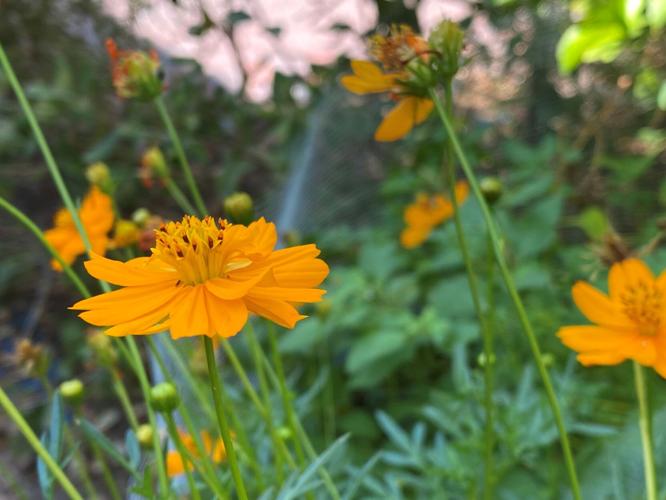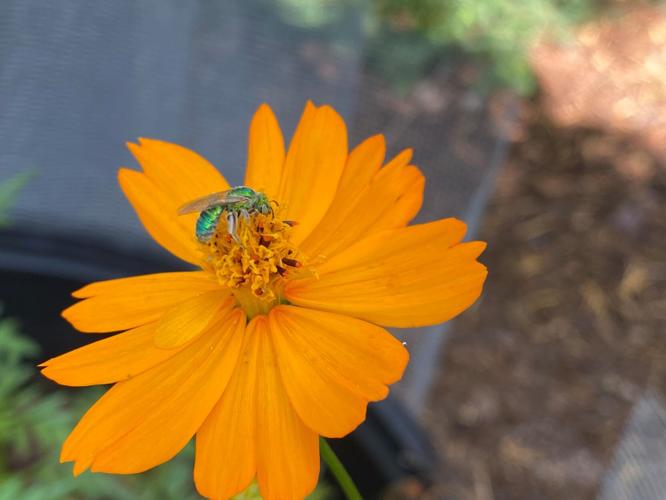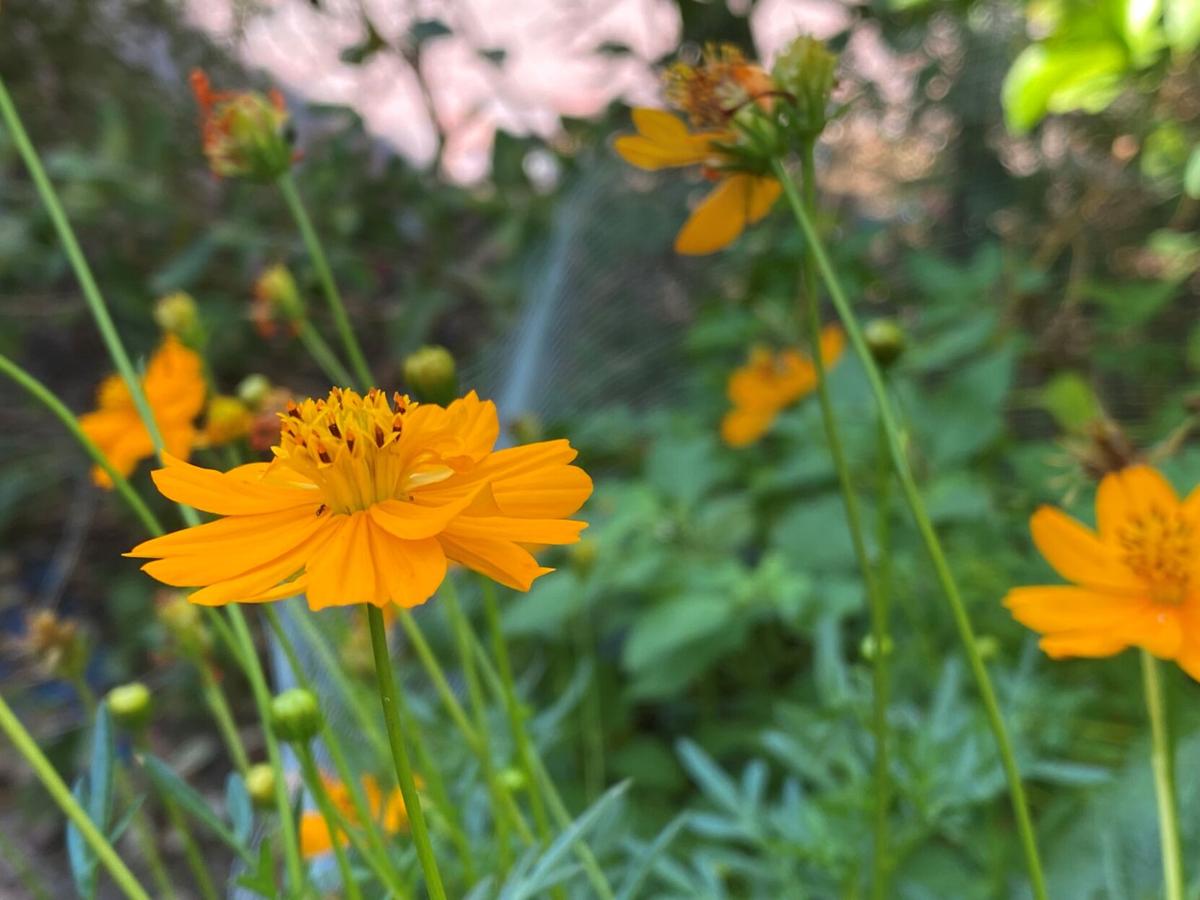The cosmos family of annual flowers (Cosmos spp.) is a familiar one to many gardeners. Most, like C. sulphureus and C. bipinnatus, are native to Mexico, but one species is native to Arizona (C. parviflorus, Southwestern cosmos). They are from the aster family and are also referred to as Mexican aster.
These annuals readily reseed themselves, and are considered invasive in some southern states. Here, however, they are unlikely to take over your yard due to their increased need for water compared to other native annuals. They are fairly drought tolerant but will need some supplemental water during our dry spring and the hot summer months.
The flowers are beautiful, and grow on stems that reach 2-3 feet. The foliage is delicate and deep green. Flowers can be pink, white, violet or orange depending on the species. They are great for pollinators, particularly native bees, and I recommend leaving the seed heads in place after spring flowering so birds can enjoy them, too. In our climate, they frequently flower a second time after a good monsoon.

Cosmos are great for native bees. If you leave the seedheads on after the flowers are spent, the birds will enjoy them too.
The best way to grow these is from seed. Plant outside in late February or March if you’re in the valley, or after danger of frost has passed. Make sure you choose a location that gets lots of morning sun; the plants will tolerate some afternoon shade but tend to get spindly if they don’t have enough light. They will die if temperatures reach less than 50 F. However, chances are they will reseed in your garden after winter has passed.
If not, it’s easy and inexpensive to obtain more seeds. A great place to get them is at Borderlands Nursery and Seed. You can also get them at Native Seeds/SEARCH where they are included in many of the wildflower mixes. I like these mixes because I get to sprinkle them around in early spring and then wait to see what comes up. It’s always a wonderful surprise.
Be wary when seeding, however — in my experience, many of the seeds get eaten by birds as soon as I leave the area. My solution to this is to seed my planting area heavily, so that some seeds survive the carnage. I sprinkle a bit of earth over them lightly and gently water them in. I tend to plant mine in pots or planting beds, where I’m watering fairly regularly and composting the soil. The flowers seem to like those conditions and invariably come up and grant me months of enjoyment.
Watch now: These beautiful native plants will be a great addition to your Tucson garden. Video by Dominika Heusinkveld/Arizona Daily Star.






